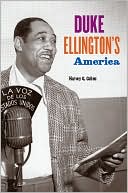Thinking in Jazz: The Infinite Art of Improvisation
A landmark in jazz studies, Thinking in Jazz reveals as never before how musicians, both individually and collectively, learn to improvise. Chronicling leading musicians from their first encounters with jazz to the development of a unique improvisatory voice, Paul Berliner documents the lifetime of preparation that lies behind the skilled improviser's every idea.\ The product of more than fifteen years of immersion in the jazz world, Thinking in Jazz combines participant observation with...
Search in google:
A landmark in jazz studies, Thinking in Jazz reveals as never before how musicians, both individually and collectively, learn to improvise. Chronicling leading musicians from their first encounters with jazz to the development of a unique improvisatory voice, Paul Berliner documents the lifetime of preparation that lies behind the skilled improviser's every idea.The product of more than fifteen years of immersion in the jazz world, Thinking in Jazz combines participant observation with detailed musicological analysis, the author's experience as a jazz trumpeter, interpretations of published material by scholars and performers, and, above all, original data from interviews with more than fifty professional musicians: bassists George Duvivier and Rufus Reid; drummers Max Roach, Ronald Shannon Jackson, and Akira Tana; guitarist Emily Remler; pianists Tommy Flanagan and Barry Harris; saxophonists Lou Donaldson, Lee Konitz, and James Moody; trombonist Curtis Fuller; trumpeters Doc Cheatham, Art Farmer, Wynton Marsalis, and Red Rodney; vocalists Carmen Lundy and Vea Williams; and others. Together, the interviews provide insight into the production of jazz by great artists like Betty Carter, Miles Davis, Dizzy Gillespie, Coleman Hawkins, and Charlie Parker.Thinking in Jazz overflows with musical examples from the 1920s to the present, including original transcriptions (keyed to commercial recordings) of collective improvisations by Miles Davis's and John Coltrane's groups. These transcriptions provide additional insight into the structure and creativity of jazz improvisation and represent a remarkable resource for jazz musicians as well as studentsand educators.Berliner explores the alternative ways—aural, visual, kinetic, verbal, emotional, theoretical, associative—in which these performers conceptualize their music and describes the delicate interplay of soloist and ensemble in collective improvisation. Berliner's skillful integration of data concerning musical development, the rigorous practice and thought artists devote to jazz outside of performance, and the complexities of composing in the moment leads to a new understanding of jazz improvisation as a language, an aesthetic, and a tradition. This unprecedented journey to the heart of the jazz tradition will fascinate and enlighten musicians, musicologists, and jazz fans alike. Booknews Describes how jazz musicians, both individually and collectively, learn to improvise. By chronologically leading musicians from their first encounters with jazz to the development of a unique improvisatory voice, Berliner documents the lifetime of preparation that lies behind a skilled improvisor's every note. Annotation c. Book News, Inc., Portland, OR (booknews.com)
List of FiguresList of Music TextsAcknowledgmentsIntroduction: Picking Notes out of Thin Air? Improvisation and Its Study1Ch. 1Love at First Sound: Early Musical Environment21Ch. 2Hangin' Out and Jammin': The Jazz Community as an Educational System36Ch. 3A Very Structured Thing: Jazz Compositions as Vehicles for Improvisation63Ch. 4Getting Your Vocabulary Straight: Learning Models for Solo Formulation95Ch. 5Seeing Out a Bit: Expanding upon Early Influences120Ch. 6The More Ways You Have of Thinking: Conventional Rhythmic and Theoretical Improvisation Approaches146Ch. 7Conversing with the Piece: Initial Routines Applying Improvisation Approaches to Form170Ch. 8Composing in the Moment: The Inner Dialogue and the Tale192Ch. 9Improvisation and Precomposition: The Eternal Cycle221Ch. 10The Never-ending State of Getting There: Soloing Ability, Ideals, and Evaluations243Ch. 11Arranging Pieces: Decisions in Rehearsal289Ch. 12Adding to Arrangements: Conventions Guiding the Rhythm Section314Ch. 13Give and Take: The Collective Conversation and Musical Journey348Ch. 14When the Music's Happening and When It's Not: Evaluating Group Performances387Ch. 15The Lives of Bands: Conflict Resolution and Artistic Development416Ch. 16Vibes and Venues: Interacting with Different Audiences in Different Settings449Epilogue: Jazz as a Way of Life485Music Texts505Appendix A: House Congressional Resolution 57759Appendix B: List of Artists Interviewed760Sources763Notes769Discography827Videography833Bibliography837Index851
\ BooknewsDescribes how jazz musicians, both individually and collectively, learn to improvise. By chronologically leading musicians from their first encounters with jazz to the development of a unique improvisatory voice, Berliner documents the lifetime of preparation that lies behind a skilled improvisor's every note. Annotation c. Book News, Inc., Portland, OR booknews.com\ \








